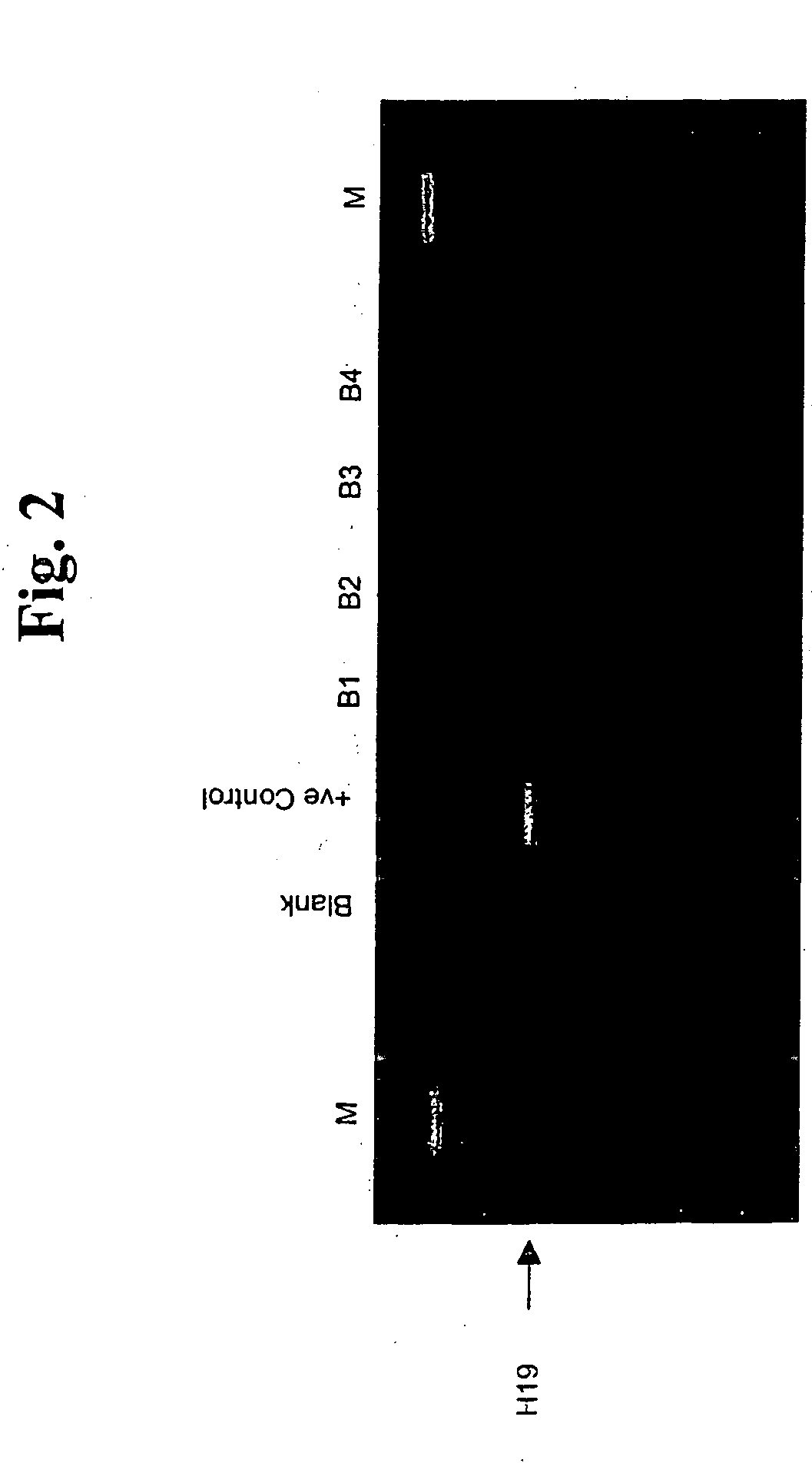Method for detection of micro-metastasis
a micro-metastasis and detection method technology, applied in the field of cancer detection, can solve the problems of complicated routine use, the controversial use of tumor suppressors, and the risk of systemic recurrence for most common types of human cancers
- Summary
- Abstract
- Description
- Claims
- Application Information
AI Technical Summary
Benefits of technology
Problems solved by technology
Method used
Image
Examples
example 1
Detection of H19 in Bladder Rinse Fluid
[0097] Voided urine was taken from patient with bladder carcinoma (DIG-H19). The exfoliated cells in the urine were separated from the liquid and underwent in situ hybridization with a radioactive H19 probe as described in I(c) in experimental procedures above.
[0098] The results of the in situ hybridization are shown in FIG. 1. As can be seen the cells present in the urine of cancer patient reacted significantly with the labeled probe, while normal urine (data not shown) did not hybridize with the probe.
example 2
Detection of H19 in Blood Samples of Colon Patients
[0099] Blood from 4 diagnosed colon cancer patients was colleted and prepared as in I(a) above and the H19 mRNA was amplified by RT-PCR as disclosed in I(b) above. The amplification products were separated on a gel and the results are shown in FIG. 2. As can be seen patients B1 and B2 were strongly positive for H19 expression (as compared to blank) while patient B3 showed a week expression of H19, indicating that 3 out of the 4 colon cancer patients had H19 expression in a detectable level.
example 3
Detection of H19 in Lymph Nodes Obtained from Breast Cancer Patients
[0100] Sentinel lymph nodes were obtained from breast cancer patients as described in I(e) above. The RT-PCR was performed on the extracted mRNA as described in I (b) above and the amplification results were separated on a gel.
[0101] The results are shown in FIG. 3. As can be seen patients L5 and L6 were tested positive for H19 expression indicating that H19 detection can be carried in a lymph node sample.
PUM
| Property | Measurement | Unit |
|---|---|---|
| PSA | aaaaa | aaaaa |
| threshold RNA level | aaaaa | aaaaa |
| size | aaaaa | aaaaa |
Abstract
Description
Claims
Application Information
 Login to View More
Login to View More - R&D
- Intellectual Property
- Life Sciences
- Materials
- Tech Scout
- Unparalleled Data Quality
- Higher Quality Content
- 60% Fewer Hallucinations
Browse by: Latest US Patents, China's latest patents, Technical Efficacy Thesaurus, Application Domain, Technology Topic, Popular Technical Reports.
© 2025 PatSnap. All rights reserved.Legal|Privacy policy|Modern Slavery Act Transparency Statement|Sitemap|About US| Contact US: help@patsnap.com



